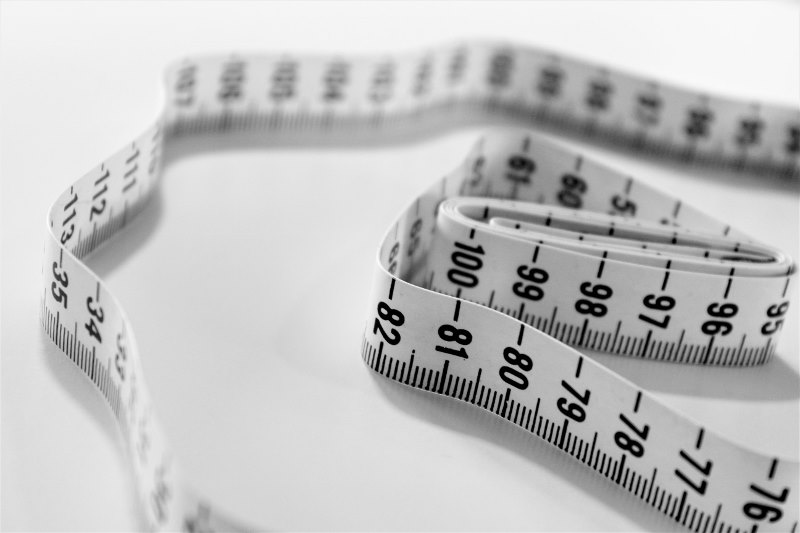I’ve stuck to the weight loss diet plan that I started on 28th December last year for more than a month now. This has resulted in some real weight loss success in January. And you know what that means? That’s right: more semi-naked photos of me… Oh, how I spoil you!
Although I started dieting on Friday 28th December 2018, I didn’t actually weigh myself until Monday 31st December. There is some argument to be made that it’s important not to get fixated on your weight and to make sure you only weigh once a week. And, because my weigh day is Monday, I waited until then. There is another, more honest argument, that I didn’t weigh on the Friday, because I didn’t want to know the damage.
Either way, my weight on 31st December 2018 was 271 lb (19st 5lb/123kg).
My weight on 31st January was 259lb (18st 7lb/118kg).
My weight loss success in January, therefore, was 12lb (5kg)
Which is a very good start, as far as I’m concerned. If I could replicate my weight loss success in January across the year, I would, potentially, lose 144lb (10st 4lb/65kg). Not, of course, that I would want to, because that amount of weight loss would leave me with a BMI of 16.8. Which according to the NHS BMI Calculator, is Underweight. And as deep into the red on the underweight side as my current weight is on the overweight side. Not a solution.
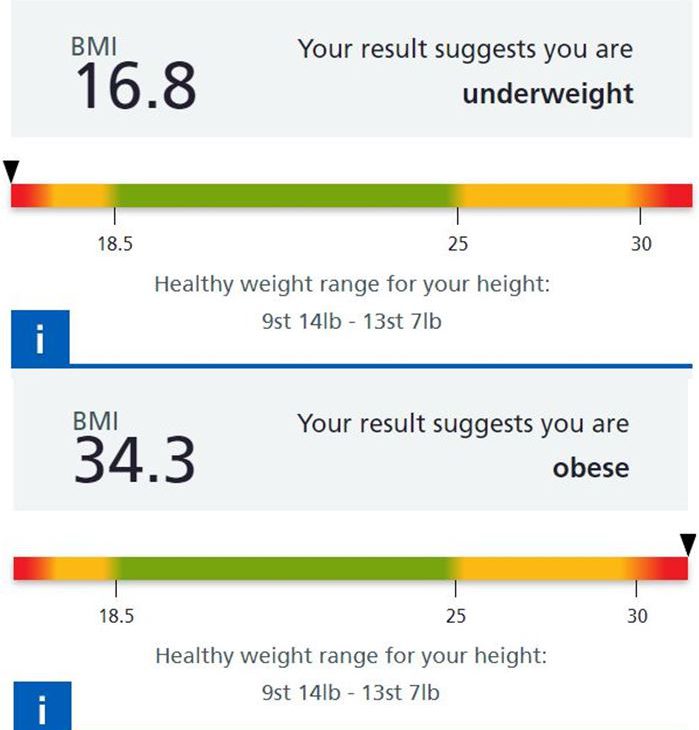
As you’d expect, I’ve achieved my weight loss success in January through a combination of diet and exercise. In terms of the exercise, for the first couple of weeks, it was mainly based around walking. I did a dedicated walk of at least 3 miles for each of the first 6 days of January. On the 7th, while I didn’t do a dedicated walk, I still did more than 10,000 steps.
In the second week, I kept up the walking and introduced some weight training. Nothing too heavy, not that I could manage anything heavy. My weight loss success in January has left me with very little strength and energy. If this persists through February, I’ll have to consider my options. Anyway, the weight training was just to prevent any potential muscle wastage from the diet and the other forms of exercise.
From the third week, the hockey season had restarted, meaning I was training on Thursdays and playing on Saturdays. This resulted in my introduction of the following exercise regime:
- Monday – Walking (1 hour)
- Tuesday – Weight Training (20 minutes)
- Wednesday – Static Cycling (40 minutes)
- Thursday – Hockey (75 minutes)
- Friday – Weight Training (20 minutes)
- Saturday – Hockey (75 minutes)
- Sunday – Static Cycling (40 minutes)
As training regimes go, it seemed to tick a lot of boxes. The weight training and cycling are low impact and prevent any additional damage to my knees. The hockey already provides plenty of this. The variation in training types means that all my muscles are involved at some point in the week, helping to reduce muscle wastage. This variation of exercise, through January, has really helped achieve my weight loss success.
I haven’t stuck to the regime as much as I’d hoped. In part because the wintery weather is impacting on hockey. There was no training on the 31st and I wanted to do cardio. It was too snowy to walk anywhere safely, so I went to the pool and swam a mile. It’s been a long time since I’ve done any swimming… I nearly died!
Another big distraction from the exercise regime, was the scans I had on the 7th and then the wait until the 23rd for the results. During that time, the stress and anxiety of not knowing what my future held, built up to some pretty epic levels. Historically, if I’m dieting during this period of scanxiety, the diet is doomed. It’s hard to motivate yourself to focus on the benefits that successful weight loss would bring to your future self, when you can’t be sure you actually have a future…
This time, however, I managed to stay focused and not break the diet. Well, sort of…
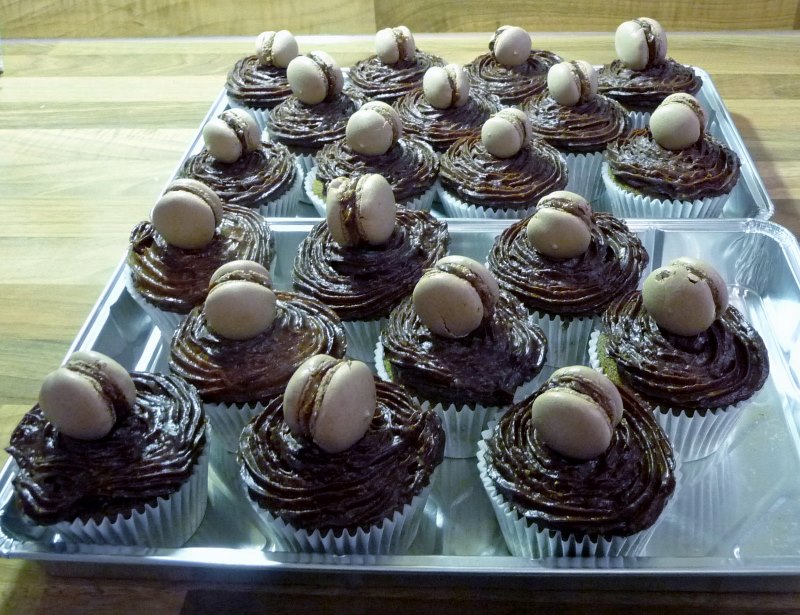
I ate a bit more than I should but it was only things like bread and cheese. And while this sounds bad, it could have been: entire packets of biscuits; entire family sized cakes, and; entire family sized packs of crisps. And I don’t mean one of these things, I mean all of them. Potentially for several nights running. So, in the face of that, a few slices of bread and a couple of chunks of cheese is something I can live with.
And it was good that I stuck to my diet, because the news was great; no visible cancer. Which means I remain cancer free. It also means I get a whole six months before my next set of scans. I don’t have to worry about scanxiety for nearly half a year. Heaven!
Which brings me to the food that I’ve been eating in order have the weight loss success in January that I had.
Basically, it revolves around two bowls or porridge (oatmeal) a day, every day. My first meal, at around noon, is porridge. My last meal, at about 10 pm, is porridge. In between these, my main meal, at about 6pm, is something healthy and substantial. I also, typically, eat a Fruit Pastilles lolly at around 11pm, and that’s it for the day.
In case you’re wondering whether eating two bowels of porridge a day gets boring, well; it’s actually not too bad. Much better than I thought it was going to be.
The most important thing for me, is that I never feel hungry, and that’s massively important. Far more important than the lack of variety in what I’m eating.
Because I’m not feeling hungry, I’m not thinking, “How many days before I can end the diet.” This time I’m actually thinking, “How can I keep on my diet during my skiing holiday?” To be fair, the success I’ve had in January with my weight loss also helps.
I’ve never really been here before: more than a month in and not fantasising about an end date. I can actually visualise myself sticking with this for the rest of the year.
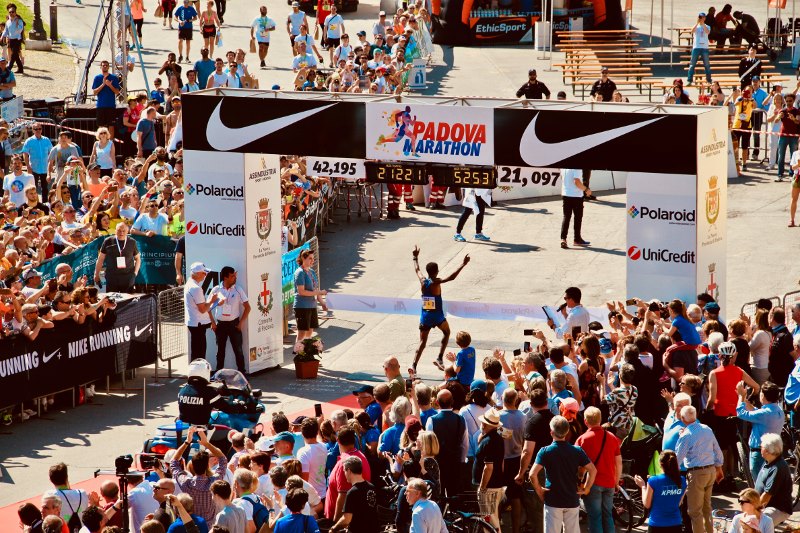
Photo by Pietro Rampazzo on Unsplash
And, despite the fact that the amount of porridge I’m eating is decreasing with my weight, I’m still not feeling hungry. The amount of porridge I have, each meal, has dropped from 60g to 57g. Likewise, the amount of milk from 360g to 342g. The amount of dried fruit, from 24g to 23g. The amount of honey, also by 1g, to 14g.
Overall, though, this means the calorific value of each porridge meal has dropped from 522 to 496 calories. While this is only a reduction of 26 calories, it also represents a 5% reduction.
But that’s right on track with what the calorie counter says. At the end of December, in order to undertake the ‘Extreme Weight Loss’ of 2lb a week, I could consume 2,330 calories a day. After my weight loss success in January, this amount has dropped to 2,253. This is a drop of 77 calories a day. The reduction in the size of my porridge meals accounts for 52 of these calories. The remaining 25 calories comes from a reduction in the portion size of my main meal.
And I feel it is important for me to keep on top of this. I need to ensure that my meals reduce with my weight and that I keep a close eye on the calorie counter. It is only in this way that I can hope to avoid the nightmare that is: the weight loss plateau. My suspicion is that more than a couple of weeks without a loss in weight would still completely derail me.
On the flip side of this, though, is the importance of not cutting back the amount of food I eat, too quickly. To do so would be to risk my body thinking that it’s starving and start messing with my metabolism. This would also lead to a weight loss plateau…
There’s no point in trying to rush. It’s only important to succeed. And the weight loss success I’ve experienced in January is proof I’m heading in the right direction.
Anyway, in my last post on my weight loss diet plan, I said that I’d include some meal ideas for the porridge. But, before I get to the actual meal ideas, I want to establish the ground rules.
About half of my calories come from porridge, but spread across two meals. To work this out; use the calorie counter to establish your daily calories and then take out the amount you want to set aside for drinks and snacks. Divide whatever is left into four and that is the amount of calories you can have in each porridge meal.
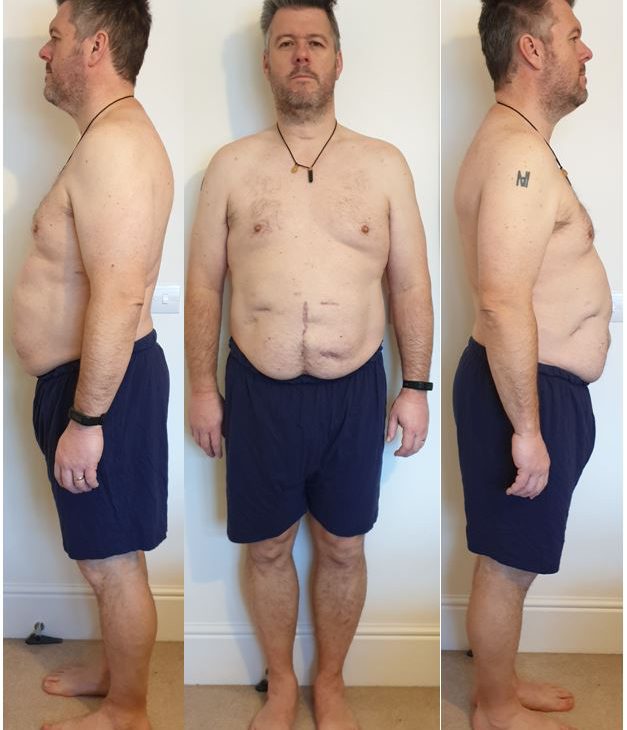
Say you had a daily calorific allowance of 1500 calories and you wanted 200 of those for drinks and snacks, that would leave you around 1,300 calories for your meals. A quarter of this amount is in the region of 325 calories. As such, each porridge meal might consist of:
- 40 g porridge oats (145 cal)
- 200 g semi skimmed milk (100 cal)
- 16 g dried fruit (50 cal)
- 10 g honey (33 cal)
Total calories in each porridge meal: 328.
There are so many options available for this meal, that it makes your head spin. For a start, you can use water instead of milk, and save yourself 100 calories. You don’t have to add the fruit or the honey, which saves a further 83 calories. You can, instead, flavour the porridge with salt, which has no calories. Likewise with vanilla or any other herb or spice; calorie free flavours. The same is true of adding coffee to the porridge… Or tea.
If you do decide to go for the completely savory option of porridge in water with salt, you could have eggs with it. Two poached eggs come to around 160 calories, which is still less than the 183 you saved from the milk, fruit and honey. And this may well be ideal for someone looking to add a bit more protein to their meals, particularly is they’re doing regular weight training.
And, a quick reminder, weight training is a good idea. Diets usually lead to an element of muscle loss. And you don’t want to lose muscle, because your body has to feed calories to muscle. If you take the muscle away, the body feeds those calories to fat cells instead. In most cases, the weight training you do, while losing weight, is just to prevent muscle loss. There is a good argument, though, for actually training to gain a bit of muscle while you’re dieting. But not at the start of a diet. And not for everyone. But those who do want to gain a bit of muscle will need protein. And poached eggs with your porridge will help with this.
But, for those of us who like our porridge with a bit of sweetness about it, there is still plenty to play around with, in terms of the milk, the fruit and the sweetener (honey).
Looking first at the milk:
| Milk | Calories (200g) | Milk | Calories (200g) |
| Water | 0 | Almond Milk* | 26 |
| Skimmed | 74 | Coconut Milk | 40 |
| 1% milk | 86 | Soy Milk* | 66 |
| Semi Skimmed | 100 | Oat Milk* | 80 |
| Whole Milk | 132 | Rice Milk | 100 |
* Unsweetened varieties
There are at least five non-dairy ‘milks’ on the market that can be used, all of which have equal or fewer calories than Semi Skimmed Milk. I did try some Almond Milk and really didn’t like it, so I’ve stuck with Semi Skimmed ever since; but the options are there. Not just in terms of taste and dietary preferences, but also in regard to portion size. If you’re using Almond Milk, it allows you to increase the amount of porridge oats in your meals to 50g, while staying within the calorie budget. Or even 60g…
This might be very useful if you’re struggling with hunger on a particular day. If, for example, you’ve done a new type, or duration, of exercise.
In terms of dried fruits and nuts, your options look like this:
| Dried Fruit | Grams for 50 calories | Nuts | Grams for 50 calories |
| Currants | 17g | Cashews | 9g |
| Raisins | 17g | Peanuts | 9g |
| Sultanas | 17g | Almonds, flaked | 8g |
| Blueberries | 15g | Hazelnuts | 8g |
| Cherries | 15g | Pistachios | 8g |
| Cranberries | 15g | Walnuts | 7g |
Roughly speaking, you can get twice as much dried fruit for 50 calories as you can nuts. But what nuts bring to the table is texture. A bit of crunch. And, with the best will in the World, porridge lacks texture. Nuts, of course, also bring flavour; but when I add them, it’s so I can actually crunch something. To which end, I add the nuts after the porridge is cooked, to keep that crunch. The dried fruit, on the other hand, goes in at the start, to plump it up a bit. This variety in my porridge meals has also contributed to my January weight loss success.
Much like nuts, fresh fruit goes in after the cooking process, to keep it intact. With honey, or other sweetening agents, this can be added either before or after cooking the porridge oats, as you wish. Traditionally the sweetener goes on after cooking. I, however, prefer to add it beforehand. Doing so, though, slows down the overall cooking process and loses some of the flavour of the honey (in my case). It also reduces the overall sweetness somewhat, making it less obvious. Which is what I’m after; I don’t want to trigger my sweet tooth.
Some examples of the fresh fruit and sweetening agents to consider are:
| Fresh Fruit | Grams for 50 calories | Sweetening Agent | Grams for 33 calories |
| Raspberries | 156 | Agave Nectar | 11 |
| Strawberries | 152 | Golden Syrup | 11 |
| Blueberries | 111 | Treacle | 11 |
| Apple | 106 | Honey | 10 |
| Cherries | 96 | Maple Syrup | 9 |
| Banana | 49 | Granulated Sugar* | 8 |
*I’ve included granulated sugar on the list of sweeteners. Any other sugar would do. For more on the different types and calories of sugar, see here.
Just as was the case with the ‘milk’ alternatives compared to milk, most of the vegan options for sweeteners give you more food for your calories than the honey does.
So, that gives us:
- 10 milk options
- 18 fruit and nut options
- 6 sweetening option
Altogether, that’s more than 1,000 different meal combination.
Of course, there are so many other options to consider, especially in terms of other fruits and nuts. Which is why there’s no need to get bored of eating porridge…
And that’s before we even get into things like, ‘overnight oats’ and ‘birchers’.
Except that I am going to have to get into those, if I want to be able to keep to my diet while I’m skiing. Because we’re in a Bed and Breakfast and if I want to eat porridge at around midday, I’m going to have to do so on the slopes. And I can’t expect porridge to be served on the slopes, which means I’ll need to take my own. But I can’t cook it myself, on the slopes, so I’ll have to take some pre-prepared porridge. And that means making some ‘overnight oats’ and taking it with me. If I intend to keep the weight loss success of January going through February, I need to work this out.
And, no; I don’t know what I’m talking about. Yet! I’ll tell you how it goes next month.
